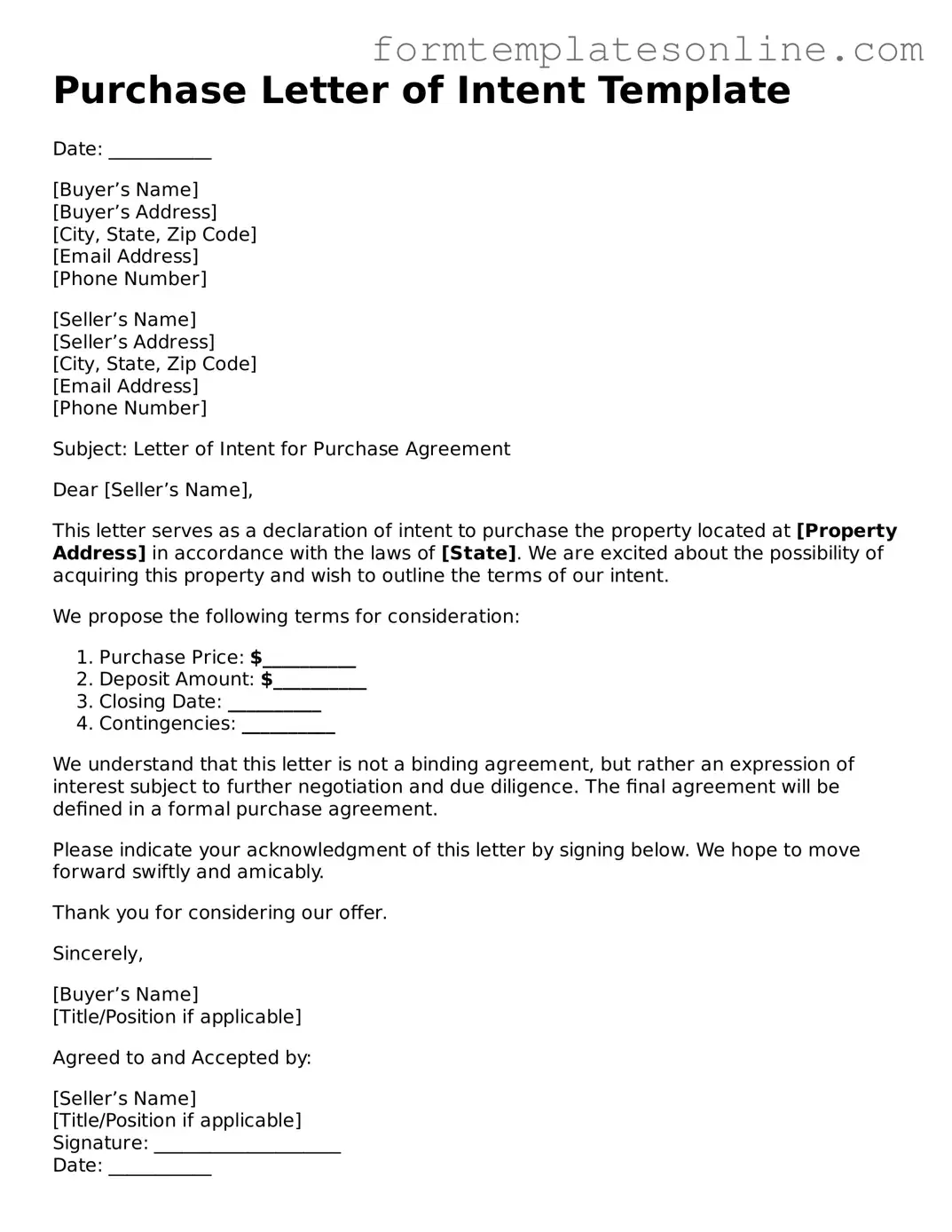Purchase Letter of Intent Template
Date: ___________
[Buyer’s Name]
[Buyer’s Address]
[City, State, Zip Code]
[Email Address]
[Phone Number]
[Seller’s Name]
[Seller’s Address]
[City, State, Zip Code]
[Email Address]
[Phone Number]
Subject: Letter of Intent for Purchase Agreement
Dear [Seller’s Name],
This letter serves as a declaration of intent to purchase the property located at [Property Address] in accordance with the laws of [State]. We are excited about the possibility of acquiring this property and wish to outline the terms of our intent.
We propose the following terms for consideration:
- Purchase Price: $__________
- Deposit Amount: $__________
- Closing Date: __________
- Contingencies: __________
We understand that this letter is not a binding agreement, but rather an expression of interest subject to further negotiation and due diligence. The final agreement will be defined in a formal purchase agreement.
Please indicate your acknowledgment of this letter by signing below. We hope to move forward swiftly and amicably.
Thank you for considering our offer.
Sincerely,
[Buyer’s Name]
[Title/Position if applicable]
Agreed to and Accepted by:
[Seller’s Name]
[Title/Position if applicable]
Signature: ____________________
Date: ___________
